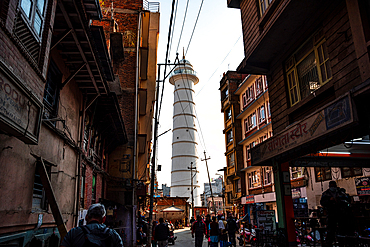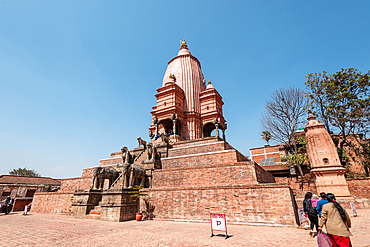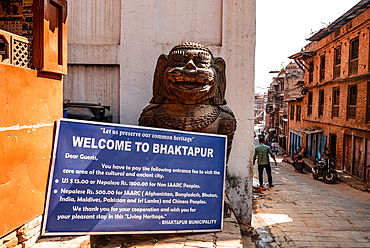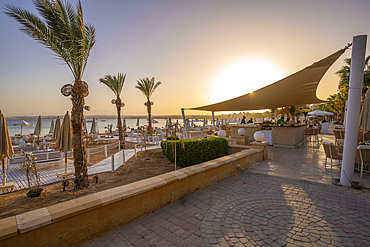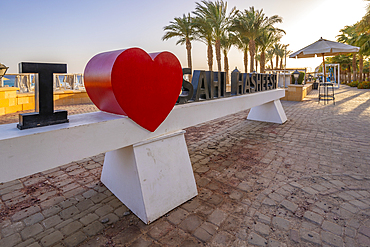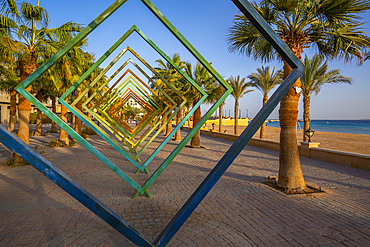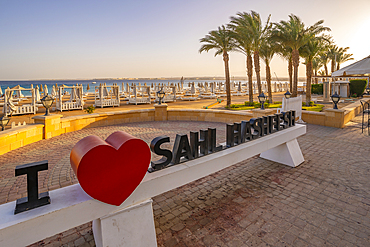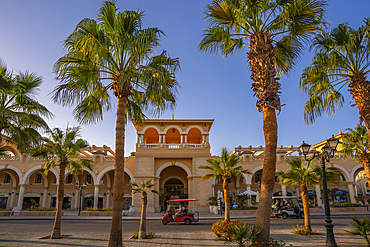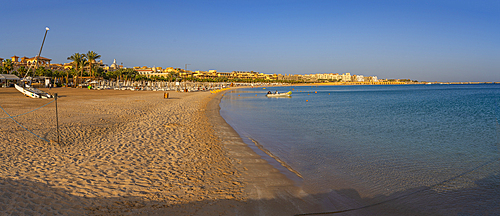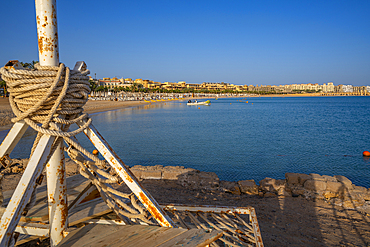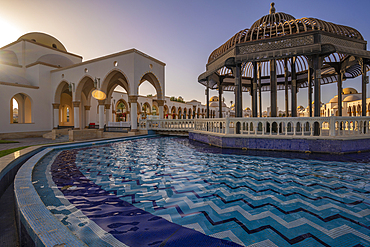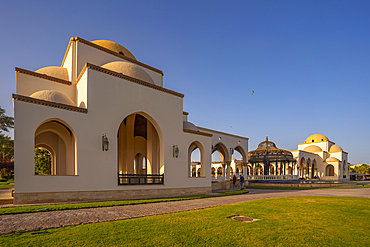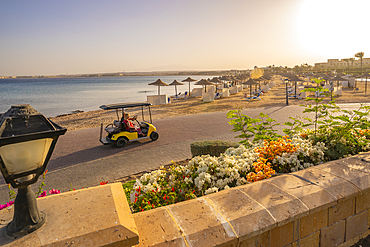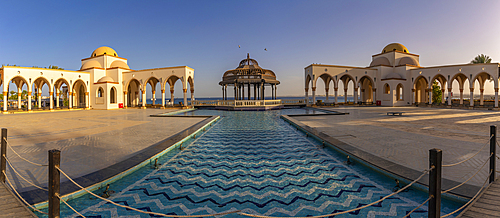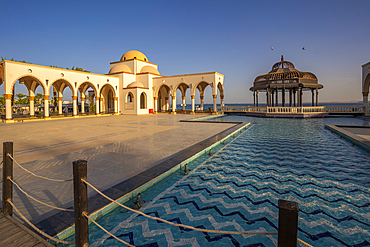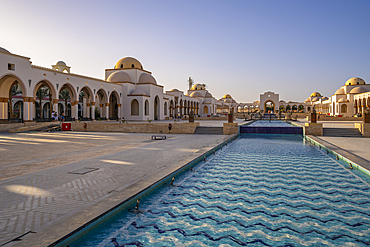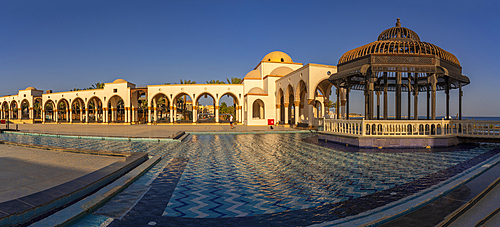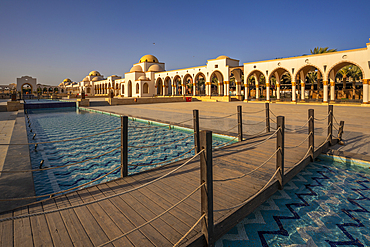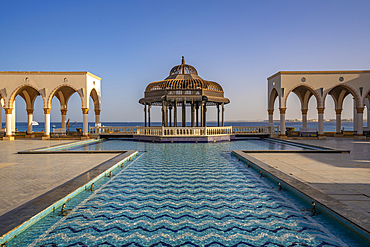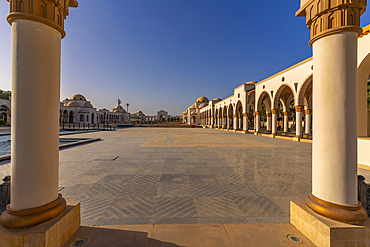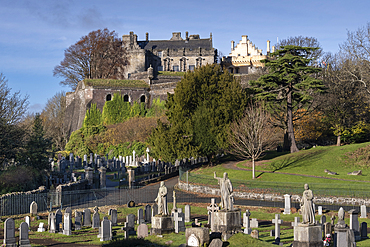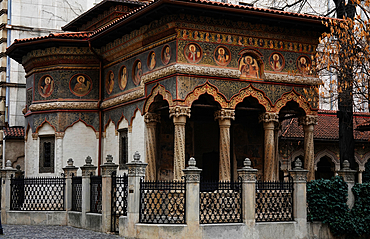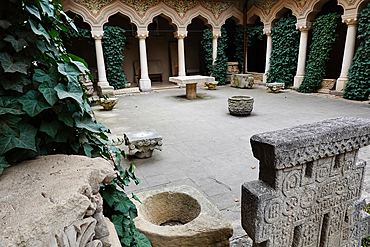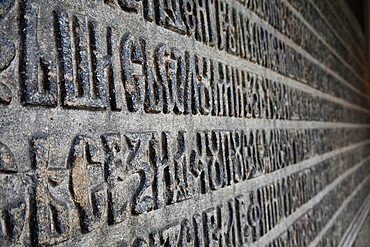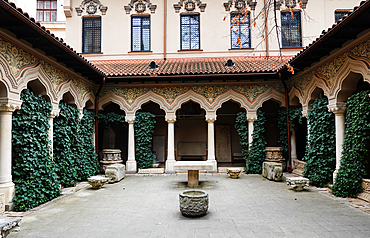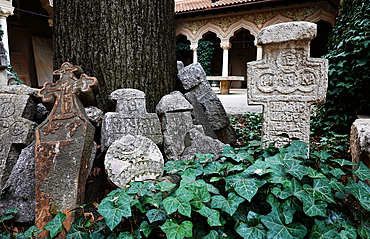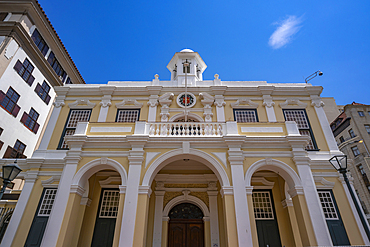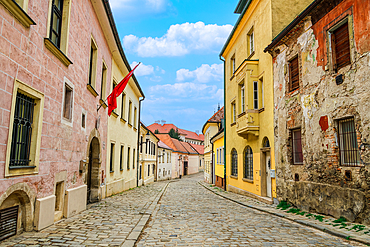Recent searches
Loading...
1384-696 - Historic Old Town Bridge, Gamle Bybro or Bybroa, Trondheim, Norway
1359-1097 - Dome of St. Francis of Assisi Church at dusk, UNESCO, Old Town, Prague, Czech Republic
1359-1096 - Rainbow above Charles Bridge at sunset, UNESCO, Old Town, Prague, Czech Republic
1359-1094 - Illuminated Lesser Town Bridge Tower, St. Nicholas Church and Prague Castle at twilight, UNESCO, Old Town, Prague, Czech Republic
1359-1090 - Detail of love locks attached to railings near Charles Bridge, Old Town, Prague, Czech Republic
1359-1084 - Old Town Bridge Tower and other spires against Petrin Hill, Old Town, Prague, Czech Republic
1359-1083 - Elevated view of houses by Old Town City Hall at Old Town Square, Prague, Czech Republic
1359-1081 - Detail of Astronomical clock at Old Town Square, UNESCO, Old Town, Prague, Czech Republic
1359-1082 - Church of Our Lady Before Tyn at Old Town Square, UNESCO, Old Town, Prague, Czech Republic
1359-1079 - Astronomical clock and The Church of Our Lady Before Tyn at Old Town Square, UNESCO, Prague, Czech Republic
1359-1077 - Church of Our Lady Before Tyn at Old Town Square, UNESCO, Old Town, Prague, Czech Republic
1359-1076 - Elevator inside Old Town City Hall at Old Town Square, UNESCO, Old Town, Prague, Czech Republic
1359-1070 - Tower of Old Town City Hall at Old Town Square, UNESCO, Old Town, Prague, Czech Republic
1160-5405 - Old town at Wehrneckarkanal canal, Esslingen am Neckar, Baden-Wurttemberg, Germany
1359-1067 - Prague Castle and Charles Bridge, UNESCO, Old Town, Prague
1359-1066 - Charles Bridge, UNSCO, Old Town, Prague
1359-1065 - Old Town Bridge Tower and the dome of St. Francis of Assisi Church at Charles Bridge at twilight, UNESCO
1359-1063 - Aerial view of Old Town with distant view of Prague Castle as seen from Powder Tower, UNESCO, Prague
1359-1057 - Elevated view of Old Town as seen from Petrin Hill, Prague
1359-1054 - Elevated view of houses by Old Town City Hall at Old Town Square
1359-1053 - Detail of decorated circle and statues at Astronomical clock at Old Town Square, UNESCO, Old Town, Prague
1359-1052 - Detail of Astronomical clock at Old Town Square, UNESCO, Old Town, Prague
1359-1050 - Charles Bridge and Prague Castle at sunset, UNESCO, Old Town, Prague, Czech Republic
1359-1049 - Elevated view of the Church of Our Lady Before Tyn at Old Town Square, UNESCO, Old Town, Prague
1359-1048 - Elevated view of the Church of Our Lady Before Tyn and Christmas markets at Old Town Square in winter, UNESCO, Old Town, Prague
1359-1047 - Charles Bridge, UNSCO, Old Town, Prague
1359-1046 - Elevator inside Old Town City Hall at Old Town Square, UNESCO, Old Town, Prague
1184-12061 - Fishing boat floating in front of the bombed government palace in the the old town of Massawa, Eritrea
1184-12057 - Destroyed former banco d´Italia in the old port town of Massawa, Eritrea
1184-12056 - Shafi´e mosque in the old port town of Massawa, Eritrea
1184-12054 - Old bombed house in the old port town of Massawa, Eritrea
1184-12055 - Ruined bombed house in the old port town of Massawa, Eritrea
1184-12053 - Sheik Hamal mosque in the old port town of Massawa, Eritrea
1184-12052 - Old houses in the old port town of Massawa, Eritrea
1184-12051 - Main mosque in the old port town of Massawa, Eritrea
1184-12049 - Main road with colonical buildings in the old port town of Massawa, Eritrea
1184-12050 - Main road with colonical buildings in the old port town of Massawa, Eritrea
1184-12048 - Luxury hotel in the old port town of Massawa, Eritrea
1184-12047 - Reflections in a little bridge in a Luxury hotel in the old port town of Massawa, Eritrea
1384-292 - People and street cafes bars, Plaza de la Constitucion square, old town city centre of Vigo, Galicia, Spain
722-113 - Horses in old town back street, Trinidad, Sancti Spiritus, Cuba, West Indies, Central America
1278-443 - Cagliari old town narrow alley with traditional buildings in Sardinia Island, Italy.
1243-541 - Franschhoek is a town in South Africa’s Western Cape with centuries-old vineyards and Cape Dutch architecture. Trails wind through flowers and wildlife at Mont Rochelle Nature Reserve to views over Franschhoek Valley
1243-540 - Franschhoek is a town in South Africa’s Western Cape with centuries-old vineyards and Cape Dutch architecture. Trails wind through flowers and wildlife at Mont Rochelle Nature Reserve to views over Franschhoek Valley
1243-539 - Franschhoek is a town in South Africa’s Western Cape with centuries-old vineyards and Cape Dutch architecture. Trails wind through flowers and wildlife at Mont Rochelle Nature Reserve to views over Franschhoek Valley
1382-114 - restoration of frescoes in the Assumption church, Traku street, Old Town, Vilnius, Lithuania, Europe
1382-93 - two young girls walking in a street of the Old Town of Riga,Latvia,Baltic region,Northern Europe
1382-89 - floodlit Brividas bridge over the Canal surrounding the Old Town of Riga,Latvia,Baltic region,Northern Europe
1382-82 - terrace of restaurant in Marstalu street,Old Town,Riga,Latvia,Baltic region,Northern Europe
1382-66 - the Art Museum Riga Bourse on Dome Square,Old Town,Riga,Latvia,Baltic region,Northern Europe
1382-64 - Old Town,Riga,Latvia,Baltic region,Northern Europe
1382-61 - aerial view over the Brividas Avenue toward the Old Town, from Radisson Blu hotel,Riga,Latvia,Baltic region,Northern Europe
1382-58 - terraces of cafe on Dome Square by night,Old Town,Riga,Latvia,Baltic region,Northern Europe
1382-57 - Pils street by night,Old Town,Riga,Latvia,Baltic region,Northern Europe
1382-56 - terrace of the restaurant Domini Canes facing the St. Peter' Church in Skarnu Street with the St. John's Church in background ,Old Town,Riga,Latvia,Baltic region,Northern Europe
1382-54 - rowing on the the Pilsetas Canal surrounding the Old Town of Riga,Latvia,Baltic region,Northern Europe
1382-53 - young people on the bank of the Canal surrounding the Old Town of Riga,in front of the National Opera house,Latvia,Baltic region
718-2834 - Old town alley filled with artwork and ceramic pots, Taormina, Sicily, Italy
718-2828 - Old town street filled with artwork, Taormina, Sicily, Italy
718-2827 - Old town street filled with artwork, Taormina, Sicily, Italy
1382-25 - Vimba bream fillets (Vimba Vimba) on a bed of green asparagus, served at Zuvine fish restaurant, Didzioji street, Old Town Vilnius, Lithuania, Europe
1382-24 - tuna tartare served at Zuvine fish restaurant, Didzioji street, Old Town Vilnius, Lithuania, Europe
1382-23 - Weaving studio, Zydu street, Old Town Vilnius, Lithuania, Europe
1372-281 - The Bhimsen Tower or Dharahara Temple, Thamel District, Old Town, Kathmandu City, Nepal, Asia.
1382-8 - boat trip on the Canal surrounding the Old Town of Riga,Latvia,Baltic region,Northern Europe
1382-6 - Latvian Red Riflemen monument, Town Hall Square,Old Town,Riga,Latvia,Baltic region,Northern Europe
1380-1 - Courthouse Street, Hastings Old Town, looking towards East Hill
1372-246 - Shilu Mahadev - Phasi Dega. Historical brick temple in the core of Bhaktapur old town. Nepal
1372-230 - Streets of Bhaktapur old town. Traditional Drum band with bronze drums celebrating
1372-226 - entrance sign to Bhaktapur old town area. Lion Statue guarding the alley
844-34235 - View of beach bar and Corniche in Sahl Hasheesh Old Town, Sahl Hasheesh, Hurghada, Red Sea Governorate, Egypt, Africa
844-34234 - View of beach and Corniche in Sahl Hasheesh Old Town, Sahl Hasheesh, Hurghada, Red Sea Governorate, Egypt, Africa
844-34232 - View of sign on beach in Sahl Hasheesh Old Town, Sahl Hasheesh, Hurghada, Red Sea Governorate, Egypt, Africa
844-34233 - View of sculpture on the Corniche in Sahl Hasheesh Old Town, Sahl Hasheesh, Hurghada, Red Sea Governorate, Egypt, Africa
844-34231 - View of sign on beach in Sahl Hasheesh Old Town, Sahl Hasheesh, Hurghada, Red Sea Governorate, Egypt, Africa
844-34230 - View of traditional buildings in Sahl Hasheesh Old Town, Sahl Hasheesh, Hurghada, Red Sea Governorate, Egypt, Africa
844-34229 - View of beach in Sahl Hasheesh Old Town, Sahl Hasheesh, Hurghada, Red Sea Governorate, Egypt, Africa
844-34228 - View of beach in Sahl Hasheesh Old Town, Sahl Hasheesh, Hurghada, Red Sea Governorate, Egypt, Africa
844-34227 - View of Arrival Piazza in Sahl Hasheesh Old Town, Sahl Hasheesh, Hurghada, Red Sea Governorate, Egypt, Africa
844-34225 - View of Arrival Piazza in Sahl Hasheesh Old Town, Sahl Hasheesh, Hurghada, Red Sea Governorate, Egypt, Africa
844-34226 - View of beach in Sahl Hasheesh Old Town, Sahl Hasheesh, Hurghada, Red Sea Governorate, Egypt, Africa
844-34224 - View of beach in Sahl Hasheesh Old Town, Sahl Hasheesh, Hurghada, Red Sea Governorate, Egypt, Africa
844-34223 - View of Arrival Piazza in Sahl Hasheesh Old Town, Sahl Hasheesh, Hurghada, Red Sea Governorate, Egypt, Africa
844-34222 - View of Arrival Piazza in Sahl Hasheesh Old Town, Sahl Hasheesh, Hurghada, Red Sea Governorate, Egypt, Africa
844-34221 - View of Arrival Piazza in Sahl Hasheesh Old Town, Sahl Hasheesh, Hurghada, Red Sea Governorate, Egypt, Africa
844-34219 - View of Arrival Piazza in Sahl Hasheesh Old Town, Sahl Hasheesh, Hurghada, Red Sea Governorate, Egypt, Africa
844-34220 - View of Arrival Piazza in Sahl Hasheesh Old Town, Sahl Hasheesh, Hurghada, Red Sea Governorate, Egypt, Africa
844-34217 - View of Arrival Piazza in Sahl Hasheesh Old Town, Sahl Hasheesh, Hurghada, Red Sea Governorate, Egypt, Africa
844-34218 - View of Arrival Piazza in Sahl Hasheesh Old Town, Sahl Hasheesh, Hurghada, Red Sea Governorate, Egypt, Africa
844-34216 - View of Arrival Piazza in Sahl Hasheesh Old Town, Sahl Hasheesh, Hurghada, Red Sea Governorate, Egypt, Africa
844-34215 - View of Arrival Piazza in Sahl Hasheesh Old Town, Sahl Hasheesh, Hurghada, Red Sea Governorate, Egypt, Africa
844-34214 - View of beach and Sahl Hasheesh Old Town, Sahl Hasheesh, Hurghada, Red Sea Governorate, Egypt, Africa
1353-671 - Stirling Castle viewed from Stirling Old Town Cemetery, Stirling, Stirlingshire, Scotland, UK
802-811 - The tiny 18th-century Stavropoleos Church, one of the most beautiful religious monuments in the capital, originally part of Stavropoleos Monastery, Old Town, Bucharest, Romania, Europe
802-810 - The tiny 18th-century Stavropoleos Church, one of the most beautiful religious monuments in the capital, originally part of Stavropoleos Monastery, Old Town, Bucharest, Romania, Europe
802-808 - The tiny 18th-century Stavropoleos Church, one of the most beautiful religious monuments in the capital, originally part of Stavropoleos Monastery, Old Town, Bucharest, Romania, Europe
802-809 - The tiny 18th-century Stavropoleos Church, one of the most beautiful religious monuments in the capital, originally part of Stavropoleos Monastery, Old Town, Bucharest, Romania, Europe
802-807 - The tiny 18th-century Stavropoleos Church, one of the most beautiful religious monuments in the capital, originally part of Stavropoleos Monastery, Old Town, Bucharest, Romania, Europe
844-33803 - View of Iziko Old Town House Museum on Greenmarket Square, Cape Town, Western Cape, South Africa, Africa
1278-391 - Historic low rise buildings with traditional architecture around a cobblestone street in the Old Town of Bratislava, Slovakia, Europe































































